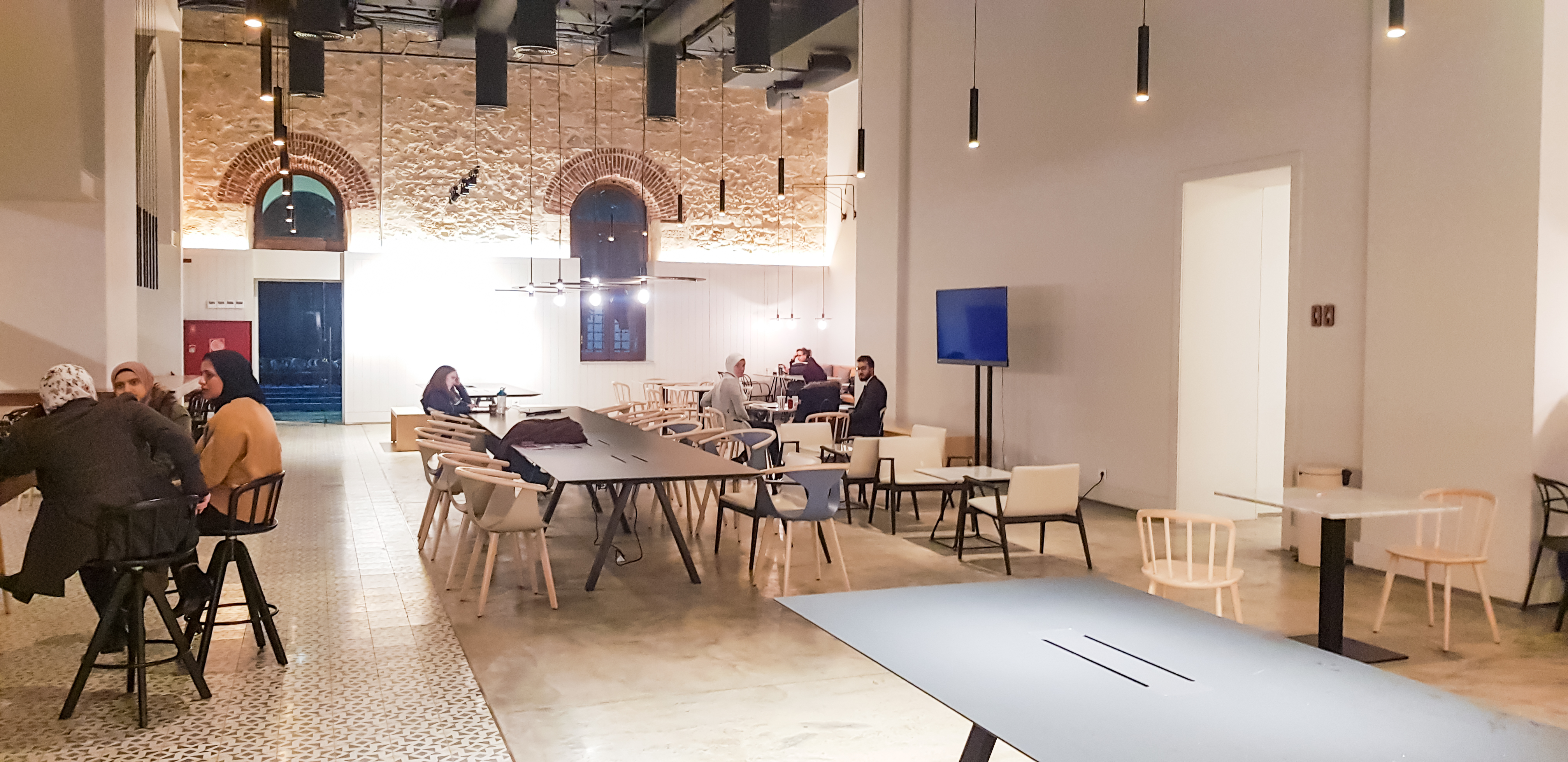Tahrir Campus Gets a Boost
By: Bassel Hanna
@basselawsamw
One year after its inauguration, the Tahrir Cultural Center (TCC) has brought the old AUC campus back to life as intellectuals and artists started holding many workshops and exhibits in its cultural hub.
Funded by Egyptian Businessman Naguib Sawiris, the TCC aims to establish itself as the center for cultural and historical dialogue in Egypt. It was launched at the beginning of AUC’s centennial celebrations, in February 2019.
“Sawiris gave a very generous gift to AUC to help the university re-establish its strong presence here in downtown. That’s to the benefit of the university and it’s also to the benefit of the neighbourhood, the community and to Cairo and Egypt as a whole,” said Tarek Atia, managing director of the Tahrir Cultural Center and Campus.
The Tahrir campus was the main AUC campus for 90 years before the New Cairo Campus was constructed. It is also a heritage site dating back 150 years when it was built by Khedive Isma’il Pasha, as one of his many palaces.
On its way to becoming AUC’s first campus, it briefly served as a tobacco manufacturing company.
“Because it’s a heritage building, when you change or transform spaces in it, you have to be very conscious of both the historical value of the spaces as well as their modern function,” added Atia.
In the ten years following the relocation of the AUC campus, the Tahrir campus had somewhat fallen into obscurity. It was mostly known for its School of Continuing Education (SCE) program, which offered non-degree students compact English courses. After the renovations, however, it became busier.
“I like what they’ve done with it and how they’re using the space to highlight art and culture by holding more events here and the cafeteria is very beautiful and a great workplace,” Erin Hayes, a former AUC associate said.
The transformations to the campus include the repurposing of six rooms; three into fully fledged art galleries and three into multi-use spaces, the restructuring of the garden landscape and the fountain area as well as sweeping changes to the cafeteria.
“The Tahrir campus is a great space in Cairo to reflect on the history of the city and the university and it’s also just a wonderful place to work or hang out with friends and enjoy a coffee,” Hayes said.
The new cafeteria was completely revamped and fitted with brand new furniture and is now a place where people can meet, lounge or get some work done.
“The renovation of the cafeteria is a key part of the cultural center because it serves as the point where everybody meets, connects and talks; the more people come here for events the more word spreads on how great that space is,” said Atia.
One of the multi-use rooms was turned into an archival welcoming reception to campus visitors that tells the story of the university grounds through its century of history. It contains a few of the very first images taken of the campus as well as the contracts used for the purchase of the campus property.
“What makes a place hip and cool is not the buildings, it’s not the brilliant spaces, it’s not just the art events that take place; it’s the humans that populate these places and it’s the feeling of you being in the beating heart of the cultural scene of Downtown Cairo,” Atia told The Caravan.
Since the renovation of the campus, multiple artistic and cultural events have been held there including a TCC Heritage Film Series, multiple art galleries and theater performances. As a result, more people have visited the campus and traffic has increased.
“The campus also has everything that we might need. After the renovations, when I came to campus, I found a lot of people here which was really encouraging,” said Aisha Assayed, an Arabic teacher for non-native speakers at the SCE.




